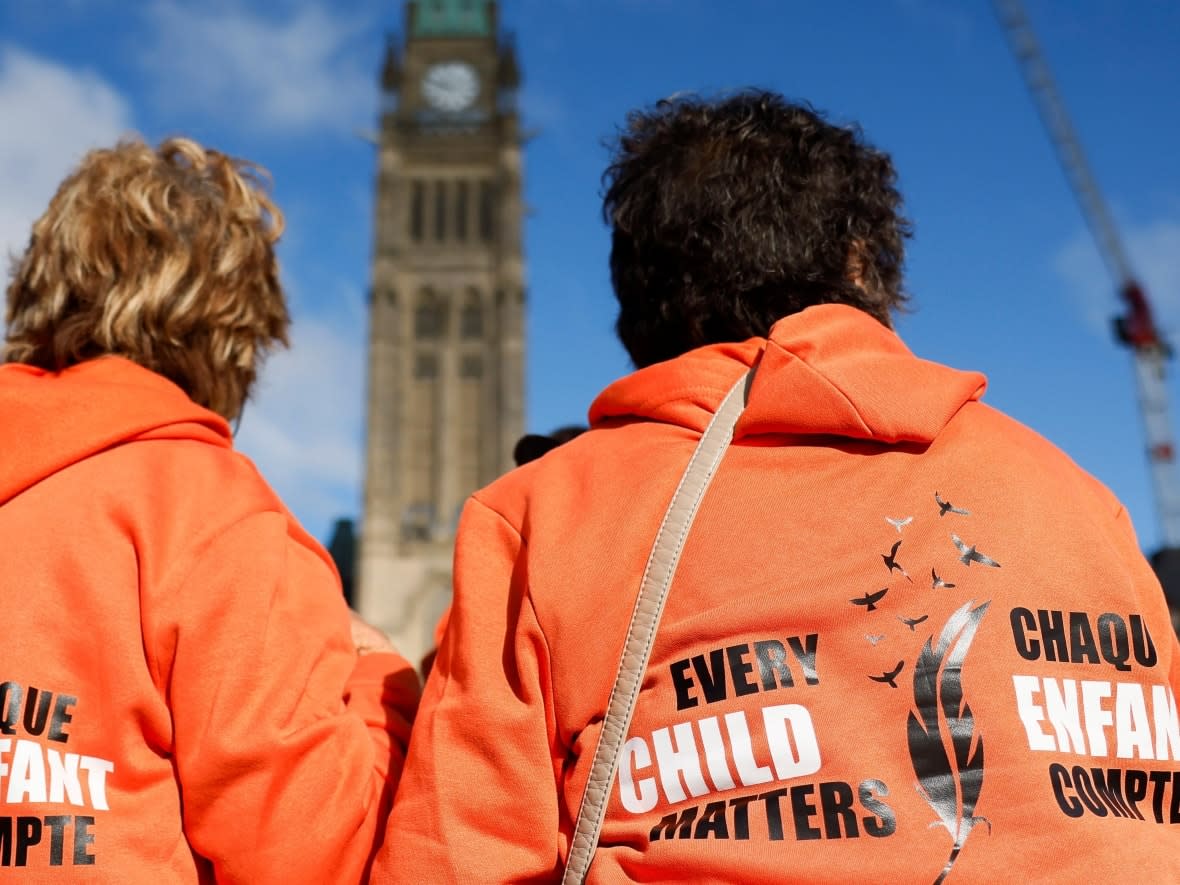3 ways to observe National Day for Truth and Reconciliation

With the second annual National Day for Truth and Reconciliation on Friday, Ottawans can mark the occasion in several ways.
The federal holiday is meant as a time for Canadians to reflect on the legacy of the residential school system and honour the Indigenous children who were forced to go.
Many institutions, like universities, will hold their own events, whereas many museums are offering free admission.
Here are three ways in Ottawa to observe:
Gathering on Parliament Hill
A national gathering in memory of the children who died while in the residential school system, as well as to honour survivors and families, will be held on Parliament Hill.
A welcoming ceremony and round dance with a Native North American Travelling College, Akwesasne, will take place at 8:30 a.m.
An opening ceremony will begin the day's events, which will run until 11:30 p.m., at which time a Spirit Walk heading towards LeBreton Flats Park will commence.
Spirit walk
The walk, led by children and residential school survivors, will take participants to the park. Once there, attendees will place Indigenous children's footwear upon the stage.
The act will symbolize the remembrance of the children who didn't make it home.
A live broadcast will be held between 1 p.m. and 2 p.m., where people can listen to survivors and the importance of reconciliation.
Plaque unveiling on Sparks Street
Several events will also take place at, or be hosted by, Beechwood Cemetery in Vanier.
On its grounds it will be holding history tours, hoping to focus on those buried at the cemetery who were involved with the Indigenous community.
It will focus on people like Dr. Peter Henderson Bryce, who helped document the health crisis in the residential school system
They'll be an unveiling of a plaque at James Hope & Sons on Sparks Street at 10:30 p.m.
James Hope & Sons published Bryce's report detailing the high rates of illness and death among children, and the failure of the Canadian government to take effective action.


